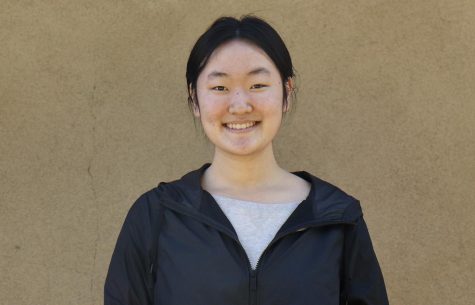“It’s freezing. So much for global warming”
The common misconceptions about the signs of climate change.
March 1, 2019
When people think of global warming, rapidly melting glaciers may come to mind. What does not come to mind is the polar vortex that hit the Midwest and East Coast of the U.S. with subzero temperatures this January. Though some may see this event as evidence against climate change, the low temperatures are paradoxically a result of global warming.
A common explanation for global warming is that greenhouse gases such as carbon emissions from cars combine with Earth’s atmosphere, allowing light to pass through but trapping heat, causing a long-term rise in global temperatures. According to the global temperature index published by NASA, Earth’s temperature has increased by about 0.4 degrees Celsius since 2000. This may not seem like much, but on a global scale, a change of just 2 degrees Celsius can have major effects on the planet. Melting ice caps, which occur at varying temperatures depending on pressure, cause an increase in rain and sea level and potential flooding in certain cities such as Miami Beach, Atlantic City and San Francisco. According to a 2018 New York Times article, coastal structures such as the San Francisco airport could be underwater by as soon as year 2100, given the rate at which the temperature is rising. Higher temperatures can also cause land to become drier and more infertile, affecting the production of food and changing certain nations’ economic standings.
Global warming is just one of the many manifestations of climate change. Climate change, though often used interchangeably with the term “global warming,” actually has a slightly different meaning. Climate change has been occurring for thousands of years; the Earth’s climate has always been evolving, from its uninhabitable start as a new planet, to the many ice ages which have formed the glaciers that currently exist in the world, to the more familiar landscape of today’s world. Global warming, on the other hand, is generally used only to describe the average rise in global temperatures, particularly that which is caused by humans.
“Global warming is the rise in temperature overall,” said junior Chap Lum Lau, president of the Conservation Action Association. “But climate change is the dramatic changes in the weather, including changes in the environment.”
Unusual and unpredictable weather such as heat waves, droughts and heavy downpours are all instances of climate change. The most recent example of climate change, however, was not hot or rainy weather — it was the polar vortex.
The last major polar vortex in the U.S. occurred during January 2014, when freezing temperatures hit major cities across the East Coast. Temperatures dropped from 50 degrees Celsius to about 9 degrees Celsius, causing severe power outages across parts of the East Coast.
The most recent polar vortex was even more extreme. In Chicago, -21 degrees Fahrenheit was the lowest recorded temperature during this period; in Detroit, the low was -13 degrees Fahrenheit; and in Minnesota, temperatures reached a chilling -56 degrees Fahrenheit. Lake Michigan completely froze over, and blackouts hit the majority of the East Coast. According to Time magazine, 21 people died from the freezing temperatures.
In addition to creating life-threatening conditions, extreme cold weather can have underlying effects on the nation’s economy. According to Forbes, the nation’s Gross Domestic Product dropped by almost 2.9 percent in the first quarter of 2014; the same time as when a polar vortex occurred. Freezing temperatures caused a major decrease in airline revenue due to cancelled flights and left many individuals stranded on the East Coast. Car sales dropped as well, and many employees were unable to attend their jobs due to the extreme weather conditions. All these factors reduced the productivity of businesses, causing a nationwide drop in the economy.
The intuitive notion that cold weather and global warming cannot exist at the same time is false. The polar vortex, as cold as it is, is an indirect byproduct of global warming. A polar vortex is not a storm, but rather a low-pressure system of circulating cold air that is usually contained in the Arctic, where its course begins. When the system of air is disturbed, warm air will move partially into the Arctic, and the cold air of the polar vortex will travel south, lowering temperatures sharply in countries such as the U.S. The reason the cold air is pushed down onto the East Coast is because of the melting of the ice caps, a product of global warming. What used to be white reflective ice turns into dark water, which absorbs much more heat than ice. This warm air pushes the colder air down toward the U.S., causing a polar vortex.
Other cold and wet weather events are also a byproduct of global warming. Not only can global warming amplify rainfall and cold weather, but also it can greatly increase the strength of hurricanes around the U.S. According to Environmental Research Letters, climate change boosted 2017’s Hurricane Harvey’s rainfall by almost 15 percent in comparison to a standard hurricane from the 1950s. As global temperatures climb, scientists expect bigger and more powerful hurricanes to hit the coasts.
In the Bay Area, however, scientists expect to see drier weather in the future as a result of climate change.
“We are seeing the impacts of climate change in California right now — more wildfires, more extreme weather, warmer summers, longer droughts,” said Eugene Cordero, a meteorology and climate science professor at San Jose State University. “We expect this will all intensify.”
Climate change is growing even more prevalent. However, both national and individual efforts can make a difference in the wake of this growing problem. Contributions individuals can make include recycling more, taking public transport, being more mindful about creating waste and participating in political advocacy.
“Make [climate change] an issue that is central to the political scene,” said senior Hansen Lillemark, vice president of the Hiking and Environmental Impact Club. “If the American public starts showing that they care about it a lot, political candidates will have to start making a difference.”
Politics and climate change are closely linked. Politicians sometimes run on environmental platforms, and since the 1990s, major legislation has been passed to combat climate change. The Kyoto Protocol was a treaty signed in 1997 by 192 countries in a global effort aimed to lower greenhouse gas emissions. France is one foreign country that has actively sought to combat climate change, having established acts and plans to increase energy efficiency and reduce harmful emissions. Additionally, the Paris Agreement, signed by 185 nations in 2015, promises to keep the global increase in temperature under 1.5 degrees Celsius. The agreement includes almost all major countries, with each country pledging money to the organization in order to progress to their goal of cleaner energy.
“Legislation can touch the spots that individual action can’t,” said chemistry teacher Jessica Lu. “It can get industries to change. A lot of the time, the biggest producers of greenhouse gases are factories and industry.”
Members of the Democratic Party are currently laying down the goals and plans for a group of new programs called the New Green Deal, which aims to target climate change.
Discussion has been centering around climate change for years. The polar vortex is yet another natural disaster signalling the growth of climate change, though it does not signify a lack of substantial effort towards stopping climate change. It takes time to make visible progress.
“A little change goes a long way,” said junior Sarah Li, vice president of the Conservation Action Association. “It’s not something we can fix instantly.”
The polar vortex of 2019 should, however, be a reminder that climate change is still very much a problem, and the Earth is changing. Therefore, the way people address this issue must likewise continue evolving.





























































